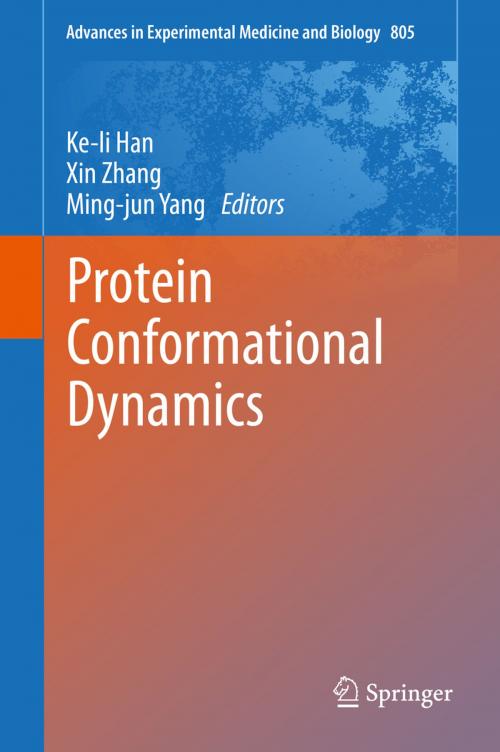Protein Conformational Dynamics
Nonfiction, Science & Nature, Science, Biological Sciences, Biochemistry, Health & Well Being, Medical| Author: | ISBN: | 9783319029702 | |
| Publisher: | Springer International Publishing | Publication: | January 20, 2014 |
| Imprint: | Springer | Language: | English |
| Author: | |
| ISBN: | 9783319029702 |
| Publisher: | Springer International Publishing |
| Publication: | January 20, 2014 |
| Imprint: | Springer |
| Language: | English |
This book discusses how biological molecules exert their function and regulate biological processes, with a clear focus on how conformational dynamics of proteins are critical in this respect. In the last decade, the advancements in computational biology, nuclear magnetic resonance including paramagnetic relaxation enhancement, and fluorescence-based ensemble/single-molecule techniques have shown that biological molecules (proteins, DNAs and RNAs) fluctuate under equilibrium conditions. The conformational and energetic spaces that these fluctuations explore likely contain active conformations that are critical for their function. More interestingly, these fluctuations can respond actively to external cues, which introduces layers of tight regulation on the biological processes that they dictate. A growing number of studies have suggested that conformational dynamics of proteins govern their role in regulating biological functions, examples of this regulation can be found in signal transduction, molecular recognition, apoptosis, protein / ion / other molecules translocation and gene expression.
On the experimental side, the technical advances have offered deep insights into the conformational motions of a number of proteins. These studies greatly enrich our knowledge of the interplay between structure and function.
On the theoretical side, novel approaches and detailed computational simulations have provided powerful tools in the study of enzyme catalysis, protein / drug design, protein / ion / other molecule translocation and protein folding/aggregation, to name but a few. This work contains detailed information, not only on the conformational motions of biological systems, but also on the potential governing forces of conformational dynamics (transient interactions, chemical and physical origins, thermodynamic properties). New developments in computational simulations will greatly enhance our understanding of how these molecules function in various biological events.
This book discusses how biological molecules exert their function and regulate biological processes, with a clear focus on how conformational dynamics of proteins are critical in this respect. In the last decade, the advancements in computational biology, nuclear magnetic resonance including paramagnetic relaxation enhancement, and fluorescence-based ensemble/single-molecule techniques have shown that biological molecules (proteins, DNAs and RNAs) fluctuate under equilibrium conditions. The conformational and energetic spaces that these fluctuations explore likely contain active conformations that are critical for their function. More interestingly, these fluctuations can respond actively to external cues, which introduces layers of tight regulation on the biological processes that they dictate. A growing number of studies have suggested that conformational dynamics of proteins govern their role in regulating biological functions, examples of this regulation can be found in signal transduction, molecular recognition, apoptosis, protein / ion / other molecules translocation and gene expression.
On the experimental side, the technical advances have offered deep insights into the conformational motions of a number of proteins. These studies greatly enrich our knowledge of the interplay between structure and function.
On the theoretical side, novel approaches and detailed computational simulations have provided powerful tools in the study of enzyme catalysis, protein / drug design, protein / ion / other molecule translocation and protein folding/aggregation, to name but a few. This work contains detailed information, not only on the conformational motions of biological systems, but also on the potential governing forces of conformational dynamics (transient interactions, chemical and physical origins, thermodynamic properties). New developments in computational simulations will greatly enhance our understanding of how these molecules function in various biological events.















